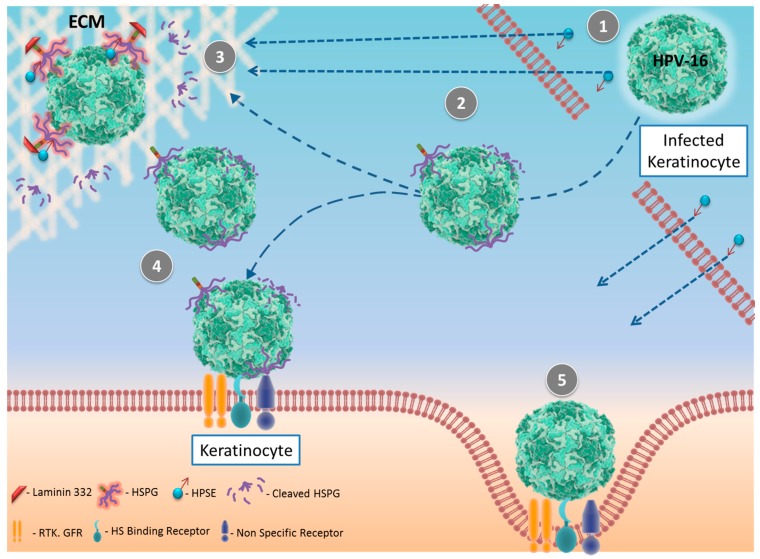Figure 3.
Schematics of HPSE’s role in HPV 16 infection. (1) Mammalian heparanase from surrounding cells or extrinsically added bacterial heparinase III (2) cleaves heparan sulfate proteoglycan (HSPG) chains attached to the surface of HPV16 or (3) reaches the extracellular membrane (ECM) where HPV16 particles attached to the ECM via HSPG are cleaved and released. (4) Released HPV16 viruses are infectious and (5) infect surrounding keratinocytes during a wound healing in vivo model, as shown by Surviladze et al [39].

